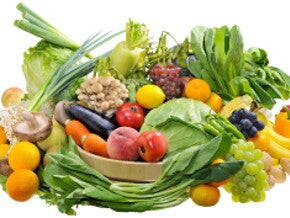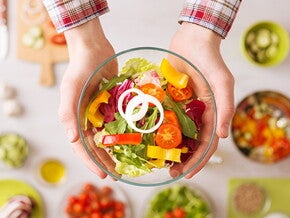
After the first year, your child will seem to grow at a slower rate, and eat less often. While a decrease in appetite is normal, good nutrition is vital as the body is busy building new tissues, bones, teeth and blood. A tremendous amount of energy is also required for increased physical and mental activities. That’s why feeding your growing child with the right nutrients is important.
At this time, you should focus on providing everything your child needs to grow, and making sure the daily nutritional requirements are met in daily baby food. Here are some recommended meal guidelines:
• Plan smaller but more regular meals as kids have limited stomach capacities. 3 main meals with 2-3 healthy snacks in between are ideal.
• Don’t worry about quantity; focus on quality baby food instead.
• Offer a wide variety of foods, as well as sufficient amounts of fluid and fibre.
• Consider likes and dislikes so as to minimize food refusals.
• Provide a steady supply of vitamins and minerals.
• Encourage consumption of fruit and vegetables that are rich in vitamin C (orange, kiwi, guava and honeydew) and vitamin A (sweet potatoes, pumpkin and papaya).
Food Pyramid for Kids
Here is a guide to your childs’ daily food requirements:
• Milk or dairy products: 2 cups (500ml)
Remember, the food you introduce will help to shape your child’s food preference.
• Energy-giving carbohydrates: 2-5 servings of whole grains or cereals
1 serving = breakfast cereal or noodles, 2 slice of bread, 6 crackers.
• Protein-rich foods: 2-3 serving
1 serving = 1 medium chicken drumstick, 2 eggs, 1 medium size fish, 1 cup beans or 1 piece towkwa (soya bean curd). Try to include both plant and animal protein.
• Fruits and vegetables: 4-5 servings
1 serving = half cup cooked vegetables or 1 piece of fruit (apple, orange).
Try to include both dark green leafy vegetables and deep orange/yellow fruit.
• Fats and oils:
Use small amounts in cooking, or as butter/margarine on bread.
• Milk Consumption
Growing kids typically need about 2-3 servings of milk a day. If your child is drinking milk without any problems, there is every reason for them to continue doing so, even into adolescence. Milk is an excellent food for growing children because it is a valuable source of protein for building tissues, as well as calcium for strong bones and teeth.
If your child is taking a decreasing amount of milk, choose milk that ‘works harder’ for him. Most growing-up milk comes fortified with a long list of the necessary vitamins and minerals. More importantly, feeding your growing child should include “probiotics” or “friendly” beneficial bacteria like Bifidobacteria probiotics, which increases the beneficial bacteria in the gut.
Encourage your child to drink milk as long as he desires, even if it dwindles to just one cup a day.
Alternatively, make up for “lost milk” by offering him dairy products like cheese, yogurt or yogurt drinks.
Developing your child’s eating habits
Most children have their own ways to tell you whether they are hungry or full. How you respond to these cues will help your child understand your reactions and his own expectations.
More importantly, do try to continue to breastfeed your child till they are at least 2 years old as recommended by the World Health Organisation while continuing to develop a regular soft to solid food eating pattern for them from 6 months of age. If you are a working mother, express your milk.
Feeding soft and solid foods
• Feed your growing child at regular times
• If you are buying foods from off the shelf, look for less salt & sugar content.
• If you are cooking, add less salt & sugar.
• Introduce mashed or blended vegetable and fruits into their food at 7~8 months.
• Make feeding time an enjoyable experience.
Good to know:
• Though you mean well, try not to overly coerce or restrict your child’s consumption of food as you may be surprised to know that your child has a remarkable ability to adjust their intake according to energy needs.
• Remember, the food you introduce will help to shape your child’s food preference.
• Don’t reward with sweets. Reward with encouragement and love e.g. bear hugs & kisses.


























